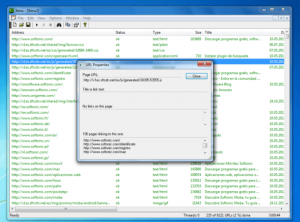Retailers who have been impacted with a growing number of inactive or lapsed customers can find answers on how to re-engage with them in a new personalization survey from CodeBroker. The coupon software provider surveyed 1,100 consumers across the United States and recently released the results. Topics ranged from SMS coupon personalization to the impact high-value offers have on attracting consumers to retailers.
The survey reveals some interesting and potentially valuable insights into coupon personalization and consumers’ coupon use. Data on the power of personalized single-use coupons and high discounts appear to be creating the most significant buzz from consumers, leading one respondent to say, “Coupons with high discounts give me a huge incentive to shop at a new store.”
That said, retailers that offer large discounts face a risk should the recipient decide to share it with others with the consequence that the coupon is redeemed more than once.
When consumers were asked how likely they would be to using high-discount coupons more than once, 88% indicated this was likely. When asked how likely they would share it, a whopping 92% said “highly likely.” The question led one respondent to say, “If I get a coupon that is a great value, I usually post it on Facebook.”
Retailers can address this risk of coupons going viral by employing a single-use coupon model that limits usage to one application (by virtue of a unique barcode/promo code). Once the coupon is redeemed it expires, regardless of which channel (mobile, web, text, social) was used to access the offer.
Listening to Consumers
The survey indicates how powerful listening to consumers can be. For example, in this latest survey, one respondent commented: “Let’s face it, multi-use coupons rarely have as good a discount rate as a one-time offer, so I prefer a bigger coupon for a single purchase.” That sentiment was echoed in the results of the survey.
In response to the question, “Which do you prefer more, high-value single-use coupons or lower-discount coupons you can use multiple times?” 74% preferred the higher value, single-use coupon.
This data is particularly enlightening when combined with the responses from a follow-up question; “Do you prefer to shop at stores that send you custom discount offers based on your purchase history?” Participants responded with an overwhelming “yes”. Nearly three-quarters of those surveyed (73%) said they indeed prefer shopping at retailers that provide custom offers based on previous purchases.
It is apparent from the survey consumers prefer higher value single-use coupons that are personalized far more than coupons that are available to anyone. The challenge? Coupon software that will prevent consumers from using them more than once and going viral. Such a system would meet the desires of consumers with more personalized, more valuable coupons while protecting the interests of retailers in managing them for single-use only.
How influential would such a system be? Consider the response from consumers when the survey asked, “How likely would you be to make a purchase from a retailer that you rarely or never shopped at if you receive a high-discount coupon from that retailer?” An eye-opening 90% of respondents said they would be likely or very likely to do so.
The results were even more impressive when consumers were asked about high-value coupons from familiar retailers. When asked, “If a retailer that you shop with regularly sends you a high-discount coupon for a product that interests you, how likely are you to use that coupon?” 99% of respondents said “yes”.
The Key to Addressing Consumer Desires in Modern Couponing
Mobile coupon marketing and SMS coupons are more popular than ever, with promotional text messages proving to be an effective tool in mobile coupon programs. The latest survey also addresses critical issues like online versus paper coupons, in-store, and online couponing and what it may take to lure new consumers to a marketing list.
Survey Details
Of the 1,100 participants in the survey, 8% were between the ages of 18-20, 49% were 31-38 years old and 43% were 39 to 54 years of age. Participants were 56% female and 44%, male. When it came to income levels, 38% had less than a $ 50,000 annual income while 48% had incomes of $ 50,000 or more. About 14% of participants declined to state their income.
Digital & Social Articles on Business 2 Community
(50)
Report Post






